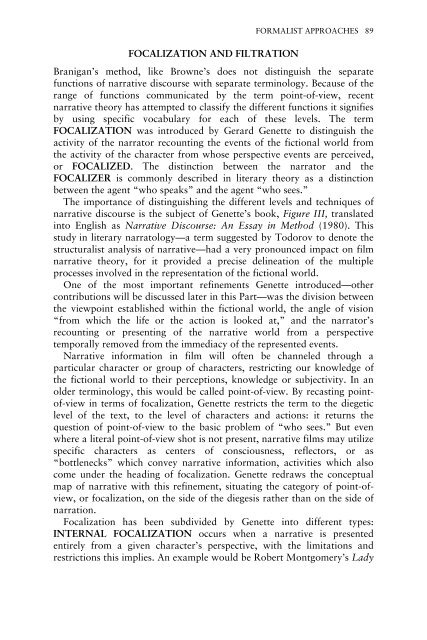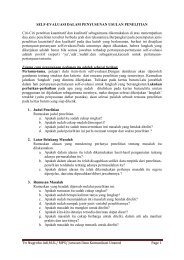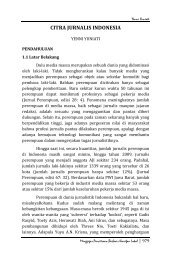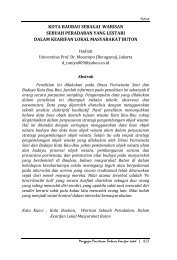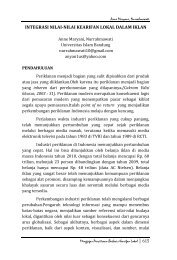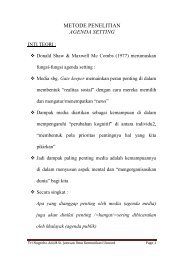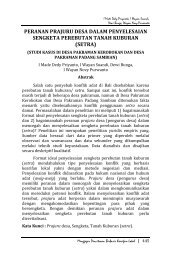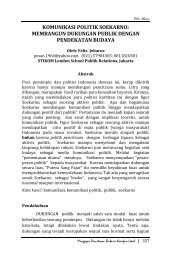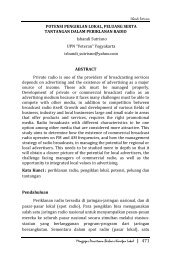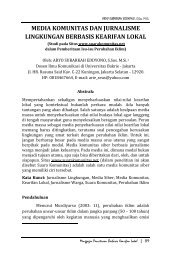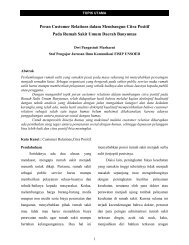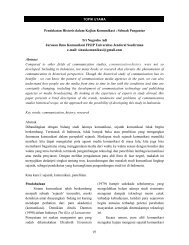New Vocabularies in Film Semiotics
New Vocabularies in Film Semiotics
New Vocabularies in Film Semiotics
Create successful ePaper yourself
Turn your PDF publications into a flip-book with our unique Google optimized e-Paper software.
FORMALIST APPROACHES 89<br />
FOCALIZATION AND FILTRATION<br />
Branigan’s method, like Browne’s does not dist<strong>in</strong>guish the separate<br />
functions of narrative discourse with separate term<strong>in</strong>ology. Because of the<br />
range of functions communicated by the term po<strong>in</strong>t-of-view, recent<br />
narrative theory has attempted to classify the different functions it signifies<br />
by us<strong>in</strong>g specific vocabulary for each of these levels. The term<br />
FOCALIZATION was <strong>in</strong>troduced by Gerard Genette to dist<strong>in</strong>guish the<br />
activity of the narrator recount<strong>in</strong>g the events of the fictional world from<br />
the activity of the character from whose perspective events are perceived,<br />
or FOCALIZED. The dist<strong>in</strong>ction between the narrator and the<br />
FOCALIZER is commonly described <strong>in</strong> literary theory as a dist<strong>in</strong>ction<br />
between the agent “who speaks” and the agent “who sees.”<br />
The importance of dist<strong>in</strong>guish<strong>in</strong>g the different levels and techniques of<br />
narrative discourse is the subject of Genette’s book, Figure III, translated<br />
<strong>in</strong>to English as Narrative Discourse: An Essay <strong>in</strong> Method (1980). This<br />
study <strong>in</strong> literary narratology—a term suggested by Todorov to denote the<br />
structuralist analysis of narrative—had a very pronounced impact on film<br />
narrative theory, for it provided a precise del<strong>in</strong>eation of the multiple<br />
processes <strong>in</strong>volved <strong>in</strong> the representation of the fictional world.<br />
One of the most important ref<strong>in</strong>ements Genette <strong>in</strong>troduced—other<br />
contributions will be discussed later <strong>in</strong> this Part—was the division between<br />
the viewpo<strong>in</strong>t established with<strong>in</strong> the fictional world, the angle of vision<br />
“from which the life or the action is looked at,” and the narrator’s<br />
recount<strong>in</strong>g or present<strong>in</strong>g of the narrative world from a perspective<br />
temporally removed from the immediacy of the represented events.<br />
Narrative <strong>in</strong>formation <strong>in</strong> film will often be channeled through a<br />
particular character or group of characters, restrict<strong>in</strong>g our knowledge of<br />
the fictional world to their perceptions, knowledge or subjectivity. In an<br />
older term<strong>in</strong>ology, this would be called po<strong>in</strong>t-of-view. By recast<strong>in</strong>g po<strong>in</strong>tof-view<br />
<strong>in</strong> terms of focalization, Genette restricts the term to the diegetic<br />
level of the text, to the level of characters and actions: it returns the<br />
question of po<strong>in</strong>t-of-view to the basic problem of “who sees.” But even<br />
where a literal po<strong>in</strong>t-of-view shot is not present, narrative films may utilize<br />
specific characters as centers of consciousness, reflectors, or as<br />
“bottlenecks” which convey narrative <strong>in</strong>formation, activities which also<br />
come under the head<strong>in</strong>g of focalization. Genette redraws the conceptual<br />
map of narrative with this ref<strong>in</strong>ement, situat<strong>in</strong>g the category of po<strong>in</strong>t-ofview,<br />
or focalization, on the side of the diegesis rather than on the side of<br />
narration.<br />
Focalization has been subdivided by Genette <strong>in</strong>to different types:<br />
INTERNAL FOCALIZATION occurs when a narrative is presented<br />
entirely from a given character’s perspective, with the limitations and<br />
restrictions this implies. An example would be Robert Montgomery’s Lady


